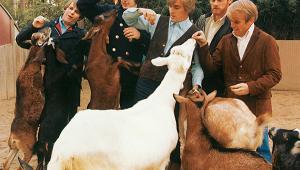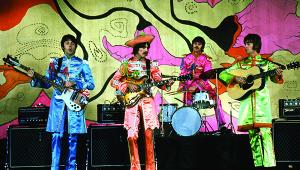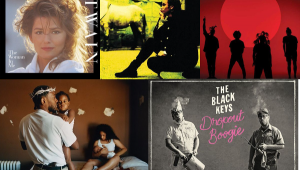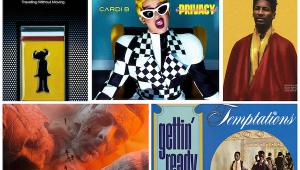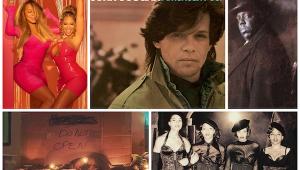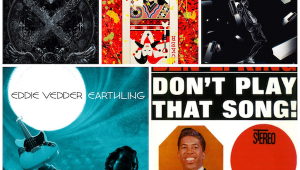Here, There and Spatially Everywhere
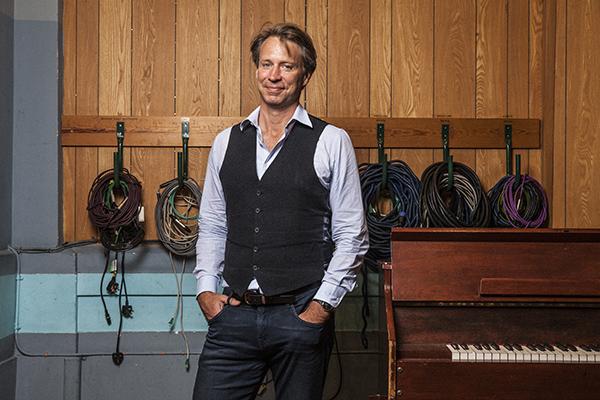
Let’s get right to it—The Beatles’ Revolver further solidified the creative validity of the rock album format when it was released in August 1966. For more evidence of that, go here to read Matt Hurwitz’s excellent insider story to see how Revolver’s recent Super Deluxe Edition multidisc LP/CD box set incarnations—all versions of which have been officially released via Apple/UMG today, October 28—came to be. Concurrently, the inherently excellent Revolver Atmos mix by producer Giles Martin was made available digitally. Naturally, I had to find out why I needed to get this mix into my listening life (he said he said), so Martin and I got on Zoom together recently to discuss exactly that. He also shared with me what his late father, original Beatles producer George Martin, thought of his multichannel mixing skills—all perfect topics to cover in this month’s Spatial Audio File. I want to tell you / My head is filled with things to say. . .
Mike Mettler: The very first Revolver track I listened to in Atmos was “Taxman,” which has always been a benchmark for me. I really love the placement of elements like the cowbell, as well as how much more defined each instrument sounds.
Giles Martin: “Taxman” is a good example of the de-mixing technology we used to unlock a lot of what went into this project. You had what was essentially a mono track with guitar, bass, and drums all together, and it could now be more like stereo. Meaning, I could now put the drums in the middle and have the bass on one side and guitar on the other side, to a certain extent. That actually gives you more impact, because you’re not tucking the whole band on one side.
Mettler:: De-mixing is the A.I. process Peter Jackson and his New Zealand-based production team developed for use with The Beatles’ [2021] Get Back documentary, and now you’ve carried it over to what you did here with Revolver.
Martin: Yes. It’s a huge, laborious process, but it’s incredibly effective. The drums sound like drums, the bass sounds like bass, and the guitar sounds like guitar—and they completely phase-cancel. If I put them back together again and play them against the original and switch to phase, there’s no transients, no noise—nothing. I’m not taking or adding anything to that. I can now de-mix the drums and have the kick drum and the snare drum separately. Essentially, it’s like taking something that’s already been baked-in together, and then separating out the original ingredients.
Mettler: “For No One” is one of the tracks that completely opens up for me in Atmos. There seems to be more dynamic range enabled there.
Martin: I think it is more dynamic, yes—and you can really hear Ringo [Starr] playing drums. That may be my favorite Revolver track at the moment. I played the French horn myself, an instrument my dad used on “For No One” [as played by Alan Civil].
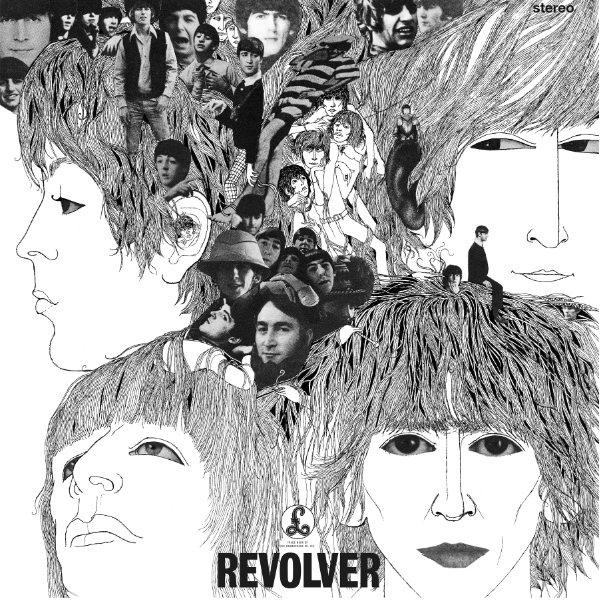
Mettler: Atmos wasn’t as prominent as it is now when your father, George Martin, was still with us. What do you think he’d say about your mixing The Beatles in Atmos? [George Martin was The Beatles’ original, longtime producer who passed away in March 2016.]
Martin: I think he’d love it. Yeah, I think he’d really be into what I’m doing now. My dad was a futurist. He loved working with new technology, learning the processes, and figuring out how to push things. He’d come have a listen to what I was doing with LOVE and he would say, “Audio is like putty for you these days—and what you can do with it is extraordinary.” [LOVE is the Cirque du Soleil theatrical Beatles show that’s been in residency at The Mirage in Las Vegas since June 2006. The Martin-mixed 5.1 version of LOVE was released on DVD-A in November 2006.]
Mettler: Was there one particular mix you did for LOVE where he went, “Yes—you’ve got it, son”?
Martin: One of the earliest things I did was [mash-up] “Tomorrow Never Knows” and “Within You Without You” together. My dad heard it and he was like, “You’ve gone too far. You can’t play those two together. You can’t mesh The Beatles. It’s outrageous.” And then Paul [McCartney] came and listened to what I’d done, and he goes, “You should go further.” I said, “Well, I’ve got this one track,” and I played it for him, despite my dad’s wishes. Paul heard it and went, “This is it. This is what you should be doing. This is fantastic.” And my dad, to his credit, said, “You know what? I was wrong. You were paving the way, and I wish I had done this.”
Mettler: Well, you couldn’t get any better endorsement than that. By the way, I do have to add that your digital Atmos mix for INXS’s [October 1987] Kick album is a favorite of mine. [MM adds: You can read my Spatial Audio File take on the Atmos mix of Kick’s big No. 1 single “Need You Tonight” right here.] Can we get you to do their [June 1986] Listen Like Thieves album in Atmos next?
Martin: Yeah, I can do that. INXS is actually complicated stuff—it’s hard. It was [originally] mixed by Bob Clearmountain, who’s a legend. Bob’s a good mate of mine, actually. When I was doing Kick, I phoned him up and asked him how he had put together certain things in the original mix. There’s no sort of rivalry going on there—we were just sharing information.
Mettler: As we both know, Bob does surround mixes for every album he works on, whether it’s part of that project’s official release slate or not. (both laugh) [MM adds: You can read my 2021 interview with Clearmountain about mixing in surround here.] If you were given a blank slate to do Atmos for any other artist, any era, do you have a wishlist? Like, “Well, I’d love to do blank in Atmos”?
Martin: No. I pretty much get asked to do just about every Atmos mix there is (chuckles), so I really don’t know. There are certain artists I’m interested in like Radiohead, but my mate Nigel Godrich should do it—and I’ve talked to him about that. [Godrich has produced the balance of Radiohead’s albums over the years.] I get a pretty good run of it, to be honest with you.
Mettler: Ok, fair enough. Last thing—was there any discussion of having a physical Atmos disc included in the Revolver CD box set?
Martin: That’s not my decision, even though I’ve been criticized for it, for some reason. (laughs) I mean, it’s great to have people be so passionate about it, because you never know. But there does seem to be a backlash about not having a Blu-ray for the Revolver box set, so we’ll probably have to address that at some point.
Mettler: I also vote for upgrading the Sgt. Pepper Blu-ray at some point to include Atmos as well.
Martin: Oh, right—there’s no physical Atmos version of [June 1967’s] Sgt. Pepper, is there?
Mettler: No, there isn’t—we just have the 5.1 mix on the Blu-ray that was included in the 2017 Sgt. Pepper box set, though there are now some Atmos tracks available digitally.
Martin: That’s good to know, because it’s worth bearing in mind for the future—and I’m all up for doing that. That would also lead into doing an Atmos mix of [November 1968’s] The White Album as well.
[Note: For more with Giles Martin about the de-mixing process and Revolver’s new vinyl editions, go here.]
